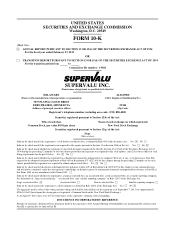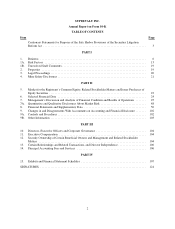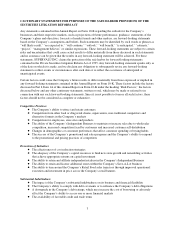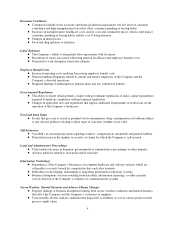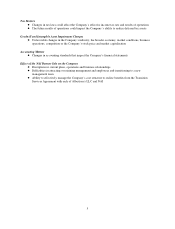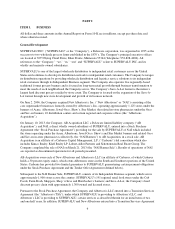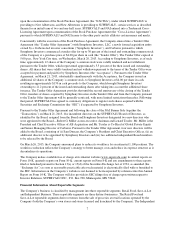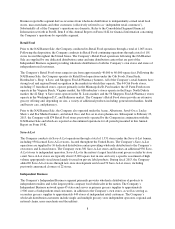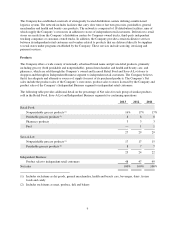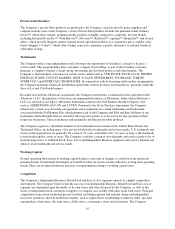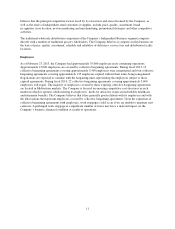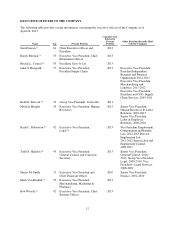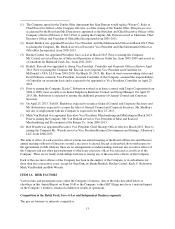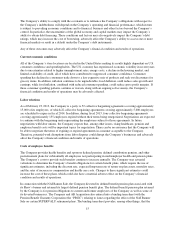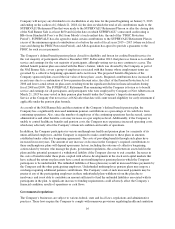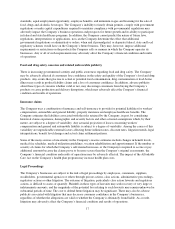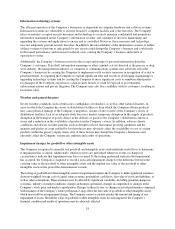Albertsons 2013 Annual Report Download - page 13
Download and view the complete annual report
Please find page 13 of the 2013 Albertsons annual report below. You can navigate through the pages in the report by either clicking on the pages listed below, or by using the keyword search tool below to find specific information within the annual report.believes that the principal competitive factors faced by its own stores and stores licensed by the Company, as
well as the stores of independent retail customers it supplies, include price, quality, assortment, brand
recognition, store location, in-store marketing and merchandising, promotional strategies and other competitive
activities.
The traditional wholesale distribution component of the Company’s Independent Business segment competes
directly with a number of traditional grocery wholesalers. The Company believes it competes in this business on
the basis of price, quality, assortment, schedule and reliability of deliveries, service fees and distribution facility
locations.
Employees
As of February 23, 2013, the Company had approximately 35,000 employees in its continuing operations.
Approximately 15,000 employees are covered by collective bargaining agreements. During fiscal 2013, 13
collective bargaining agreements covering approximately 5,500 employees were renegotiated and four collective
bargaining agreements covering approximately 135 employees expired without their terms being renegotiated.
Negotiations are expected to continue with the bargaining units representing the employees subject to those
expired agreements. During fiscal 2014, 22 collective bargaining agreements covering approximately 5,600
employees will expire. The majority of employees covered by these expiring collective bargaining agreements
are located in Midwestern markets. The Company is focused on ensuring competitive cost structures in each
market in which it operates while meeting its employees’ needs for attractive wages and affordable healthcare
and retirement benefits. The Company believes that it has generally good relations with its employees and with
the labor unions that represent employees covered by collective bargaining agreements. Upon the expiration of
collective bargaining agreements with employees, work stoppages could occur if we are unable to negotiate new
contracts. A prolonged work stoppage at a significant number of stores may have a material impact on the
Company’s business, financial condition or results of operations.
11


